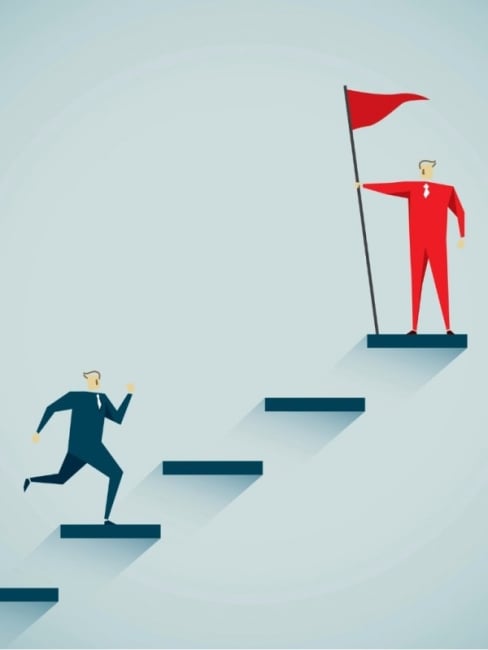You have /5 articles left.
Sign up for a free account or log in.

Istockphoto.com/erhui1979
Recently, Michigan State University, the University of North Carolina at Chapel Hill and the University of Central Florida -- all large, complex and notable universities -- suddenly lost their presidents. Hasty exits are often dramatic, but when it is the leader of an organization, the signals sent -- and the consequences felt -- can be especially damaging.
Such departures are disruptive because the unanticipated discontinuity in leadership creates psychological and mechanical pauses that stall crucial activities, such as fund-raising and strategic planning. But it appears that even if a departure isn’t sudden, there is still likely to be uncertainty. And, in fact, relatively few universities have a succession plan in place.
Much of my research and writing has focused on improving our understanding of the No. 2 role in business: the chief operating officer, or COO. While the COO is not necessarily positioned as the CEO’s successor, research suggests that is often the case. In one study of for-profit companies, I found nearly half of new CEOs were promoted from the role of COO. Research on higher education has reported that a similar phenomenon exists at colleges and universities, as well. Odds are that one of your provosts will soon be on their way to East Lansing, Chapel Hill, Orlando or some other campus looking for a new chief executive. That raises an important question: How well does the provost position actually prepare someone to be a university president?
In a university, the provost is the COO. Certainly, there are other key executives, some with terminal degrees, tenure and professorial experience. Others will have taken an administrative track, serving in areas such as finance, institutional research or auxiliary services. In the end, however, people often assume that the member of the leadership team most likely to one day be a president is the provost.
For that reason, assuring proper leadership succession in colleges and universities -- and minimizing the disruptions caused by exits like those at MSU, UNC and Central Florida -- requires an understanding of the provost role and the degree to which it prepares someone to be an effective president.
For nearly 15 years, much of my research has been focused on developing a better understanding of the COO role. Across the various projects, I have been interested in two linked questions: 1) what does it take to be an effective COO and 2) how well does the COO role equip someone to become CEO? Answers to these questions are reported in a book that I co-authored several years ago with Steven Miles, Riding Shotgun: The Role of COO. In that work, we identify a potential weakness concerning a provost’s later performance as CEO: the perception, accurate or not, that is that they are not sufficiently strategic. Success as No. 2 requires a deep dedication to execution. In contrast, success as CEO requires the ability to create, communicate and then inspire others to work to realize a compelling vision.
This distinction exists in colleges and universities, too. The president guides the institution toward a future that’s been staked out, while the provost makes sure teaching and research activities are taking place, properly supported and well executed. A 2017 study by Deloitte’s Center for Higher Education Excellence in conjunction with Georgia Tech’s Center for 21st Century Universities described today’s provost as focused “inward and down” while the president is looking “up and out.” This same language is used to contrast COOs and CEOs. If the No. 2 person is, or is merely perceived to be, nonstrategic, their ability to lead as the No. 1 person is compromised.
The No. 2 role faces a secondary but related challenge when it comes to preparation for promotion. Other C-suite positions, like chief financial officer, are much the same company to company. But the COO role has been shown to be rather situation specific. For the most part, the nature of the CEO and, to a lesser extent, the needs of the company create those differences.
That is also the case for provosts. For example, some provosts are charged with driving a particular result, such as growing enrollment. Others are selected to be change agents, and some serve as chargés d’affaires. Consider as one consequence the power and authority that the provost holds. In the first case, that power and authority are broad but focused internally. In the second case, power and authority are focused more narrowly inside the university but likely to extend to relationships with a band of external stakeholders. In the final case, power and authority are only held in the absence of the president.
Whenever the role is different, the usefulness of the role in preparing a president cannot be assumed. Each provost role offers a distinct developmental opportunity. As a consequence, it is not always easy to say just what an experienced provost is ready to do next.
To be fair, no position is sufficiently complex, demanding, dynamic and public to assure an incumbent is prepared to be a university president. Effectiveness as president is a mysterious function of who a person is, how they present themselves and how they leverage available resources, as well as the experiences they’ve accumulated over many years. At the same time, given the frequency with which provosts ascend to institutions’ top leadership roles, it is useful to understand the ways in which the provost might or might not be ready to succeed, based on what their position has allowed them to experience. University succession planning, as rare as it disappointingly is, would benefit from a deliberate effort to be sure the person in the position that universities turn to most for the next president is someone who’s prepared for success.
Three Recommendations
So what should be happening at a university interested in readying the provost to be president? What should a provost with an eye toward a presidency do to be most qualified when an opportunity presents?
First, the provost needs chances to be the public face of the university. Not every opportunity makes sense for this purpose. Sometimes the audience has a proper expectation that the president will be there. And if the opportunities cast the provost in a limited role, the effort will not be effective. As one COO lamented to me, “When we open a plant, the CEO is there. When we close a plant, I am the one there. It’s changed how people see me.”
Second, stakeholders need to experience the provost as the lead in some interactions. Alumni, members of the community and other stakeholders should all have the chance to understand the provost is a talented leader in their own right, not simply the president’s right hand. This requires the president to identify places where they are comfortable being out of the room while the provost represents the university to a wide range of stakeholders.
Third, the provost has to be able to create and lead strategic initiatives of their own design. Nothing refutes a label of being nonstrategic better than proof points. A provost ready to be president can point to meaningful changes on the campus they serve that resulted from their own vision, initiative and perseverance.
In the end, each of these steps is about providing the provost a turn in the spotlight as the leader. Not all presidents will be equally comfortable with this. And, possibly, not all provosts are ready. But if leadership continuity is a concern, and if provosts are likely successors, a president is well advised to invest in a provost capable of preventing the institutional anxiety that's associated with turnover at the top.




